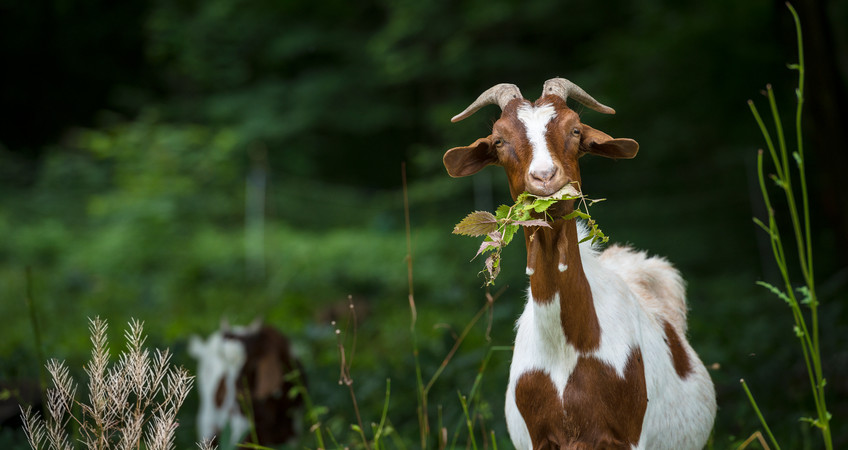

Goats are hardy animals; they typically do not require much complicated husbandry. But they can become infested with a number of external parasites, including fleas and ticks. To keep goats healthy, inspect them regularly for such pests. It may be possible to remove a number of ticks by hand, but it is often necessary to treat serious infestations with medications designed to kill ectoparasites.
Inspecting Your Goat
Take your goat into a well-lit area and inspect him thoroughly for external parasites. Be sure to look in all of the body’s crevices, such as those of the armpit, groin, ears and anus. The flashlight will help you see the parasites more easily, while the grooming brush will make it easier to move the hair around and inspect the roots.Remove a few of the parasites for inspection. Do not dislodge feeding ticks or lice; leave them attached for now.Use the magnifying glass to identify any pests you find, and ensure that the parasites are in fact ticks and fleas. Distinguish ticks from keds, commonly known as sheep ticks, by counting their legs – ticks have eight, while keds have six. Identify fleas by noting their vertically flattened bodies, which distinguish them from lice, which have horizontally flattened bodies.Place all of the parasites found in the jar of alcohol to ensure they die.
Hand-Removal and Hygiene
Put on latex gloves to prevent direct contact with ticks.Remove any ticks you find with the tweezers or a tick-removal tool. Be sure to pull the tick with slow, steady pressure to avoid breaking off the tick’s head. It may not be realistic to remove all of the ticks present if the infestation is significant, but try to remove as many as you can. Be sure to place any removed ticks in the jar of alcohol. Fleas are too small and occur in numbers that are too great to control in this manner.Bathe your goat with gentle soap, warm water and a soft-bristle scrub brush to remove as many parasites as possible. Dry the goat by hand with a towel, and allow him to completely dry in a warm, clean location.While the goat is drying, clean his living quarters thoroughly. This is especially important for flea infestations, as flea eggs accumulate in areas where the goat spends a lot of time. Discard or burn disposable materials and wash nonporous surfaces with hot water and a scrub brush. Let the goat enclosure dry completely as you move on to applying insecticide, if necessary, with your vet’s approval. An infestation means it’s time to bring the vet into the goat’s care.
Using the Insecticide
Consult your vet before working with insecticides.
Be sure to obtain a product that is registered for use on goats, and will effectively treat fleas, ticks and keds, if they are present.
Put on fresh latex gloves.Mix the insecticide in the correct concentration for spray use, as indicated by the product label and confirmed by your vet.
Only use a federally registered insecticide applicable for treating goats infested with fleas and ticks, such as Asuntol.
You can use Asuntol as a dip, but most pet owners find that it is easier to mix and apply the insecticide as a spray.
Spray the insecticide over the entirety of the goat’s back, sides and flanks.
Spray the insecticide on the goat’s brisket, then spray each leg.
Spray the insecticide on the goat’s underbelly, including the scrotum or udder, if present.
Spray the insecticide on the tail and anal area.
Be sure to cover all sides of the tail base thoroughly.Spray the insecticide on the goats face, chin, head, neck and ears.
Let your goat dry thoroughly in a warm, dry place before placing him back in his living quarters.
Treat your goat again approximately 21 days after the initial treatment to kill any fleas that hatch after the first treatment.
Sometimes, a third or fourth round of treatment is necessary to break the parasites’ reproductive cycle.
 Contact Jaguza Support
Contact Jaguza Support